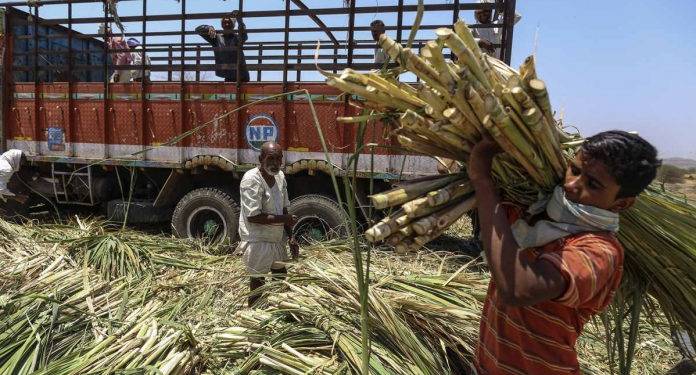As the world grapples with a severe shortage of sugar, India stands to gain as the country has a surplus of sugar. The world’s number 2 exporter of sugar, Thailand has seen its crop succumb to widespread drought and Brazil and India are looking to fill the void left by Thailand, reports ThePrint.
Thailand which is battling drought has seen its sugar exports plunge at a time when the European Union has also been producing less sugar of late. On the other end, Indonesia, the world’s largest importer of raw sugar is hungry for more sugar as it aims to import about 1.4 million tons of raw sugar, for household use this year and in early 2021 which marks an 11-fold increase from last year. The imports for households are on top of 3.25 million tons in forecast purchases this year to supply industrial users. The US Department of Agriculture estimates the country will buy 4.5 million tons of raw sugar in 2019/20.“Ideally, we must have at least 1.3 million tons of stockpiles in early 2021. If there’s no additional supply through imports while demand keeps increasing, prices will definitely continue to rise” said Yadi Yusriyadi, senior advisor at the Indonesian Sugar Association.
Since the turn of 2020, the global prices for sugar have surged about 12% at a time when Thailand and the European Union are struggling to produce the crop and Brazil has turned more of its cane crop into ethanol while the freezing weather has destroyed the crops in North America. To put things into perspective, London-based commodities trader ED&F Man Holdings Ltd. raised its forecast for a world sugar deficit this season by about 10% to 7.7 million metric tons after a surplus a year earlier. The market, which was previously grappling with an oversupply from India, now needs the sugar, said LMC International.
The Indian government on its part is negotiating with Indonesia to lower the colour specification that will allow supply from the South Asian country, according to the Indian Sugar Mills Association. India is the world’s second-largest producer of sugar after Brazil and saw itself being dragged to the World Trade Organisation by Australia and Brazil in March last year. Their contention was that the subsidies, including the extent of farmer assistance, far exceeded the norms set by the WTO resulting in higher sugar production/exports which dampen the international prices and, consequently, hurt their domestic producers.
Fast forward to 2020, the world increasingly needs more of India’s surplus sugar output. The Indian government has been grappling on how to handle the sugar surplus. A surplus of sugar depresses the prices apart from affecting the cash flow of the mills. The Modi government has looked to reduce the dependence on crude imports and has encouraged blending of ethanol with petrol and it has done well on this front by giving a fresh impetus to the ethanol-blending programme and, most importantly, announcing remunerative prices for procurement by oil companies. It has set a 10 per cent blending rate by 2022.
Ethanol is manufactured from molasses, which is a by-product of sugar and blending of ethanol with petrol is a win-win situation for India as it solves the surplus headache and also reduces India’s dependence on crude imports for its energy security.































